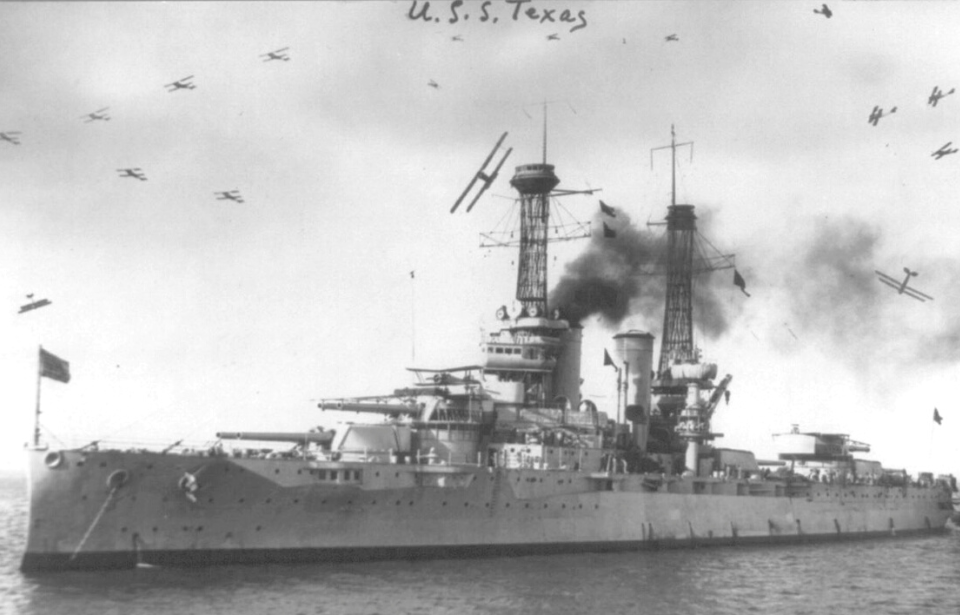The USS Texas (BB-35) saw more combat action in her lifetime than most other US battleships, seeing service in both World War I and II, and combining military prowess with ingenuity to aid in the Allied success on D-Day. One outside-the-box idea by those aboard the vessel that day put the entire crew’s lives in jeopardy – thankfully, it paid off.
New York-class super-dreadnought battleships
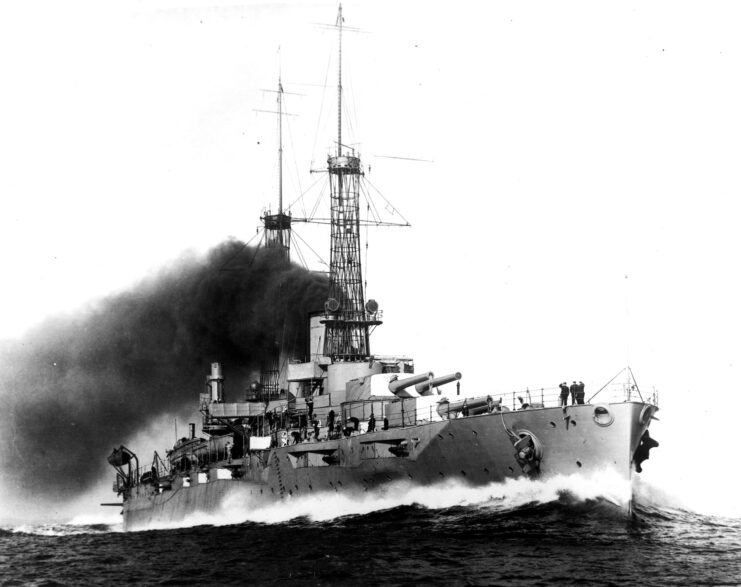
The USS Texas was a New York-class battleship commissioned in March 1914, just months before the outbreak of WWI. She was the second of two ships within the class, which had been designed to be successors to the lesser-armed Wyoming-class. Considered the US Navy’s first true super dreadnoughts, both Texas and her sister vessel, USS New York (B-34), were armed to the brim.
The vessels featured a primary armament of ten 14-inch deck guns, as well as a variety of secondary firepower, including four QF 3-pounder Hotchkiss saluting guns, twenty-one 5-inch guns and two QF 1-pounder “pom-poms.” Each also sported four torpedo tubes, capable of firing the Bliss-Leavitt Mark 3 Torpedo.
Along with being equipped with a wide-array of weaponry, Texas and New York were heavily-armored, and both were powered by water-tube boilers and triple-expansion steam engines. This afforded them a top speed of just over 24 MPH and a range of around 1,825 miles.
USS Texas‘ service during World War I
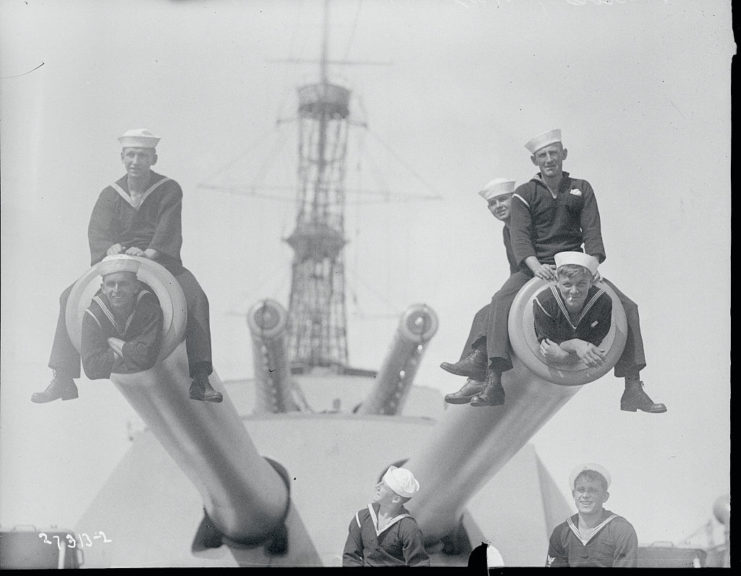
As the United States didn’t enter the First World War until April 1917, the USS Texas first got a taste of service in the aftermath of the Tampico Incident, the result of growing tensions between US Navy sailors and Mexican soldiers. She transited to Mexico just shortly after her commissioning, without a typical shakedown cruise, and remained off the coast of Veracruz for two months
After a short time conducting operations with the Atlantic Fleet, Texas returned to the coast of Veracruz. In 1916, she became the first US battleship to mount anti-aircraft guns – 3-inch guns – and the first with the ability to control gunfire using directors and rangefinders. These tools are still used today, just in a much more high-tech capacity.
Interwar period
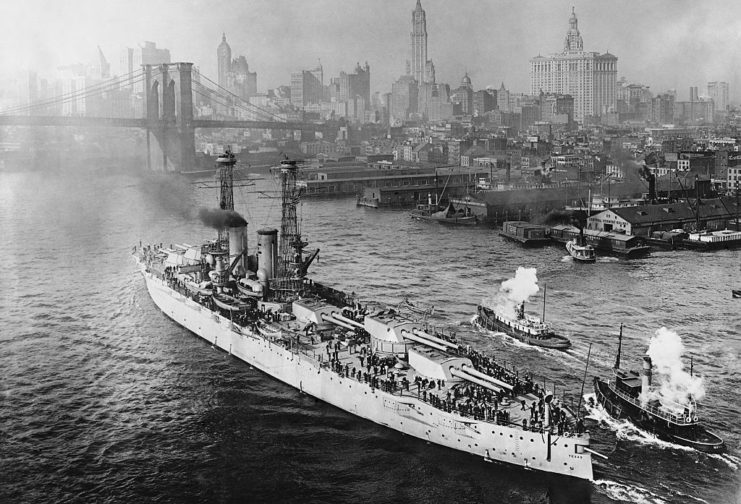
The USS Texas returned to the US in late 1918, and after escorting US President Woodrow Wilson to the Paris Peace Conference for the signing of the Treaty of Versailles underwent an overhaul and resumed her duties with the Atlantic Fleet.
In 1919, Texas became the first US battleship to launch an aircraft, a British-built Sopwith Camel, and served as a navigational reference and guard for the Curtiss NC-4, which became the first seaplane to conduct a trans-Atlantic flight. Shortly after, the super-dreadnought was transferred to the newly-established Pacific Fleet and given the designation BB-35.
Operation Torch
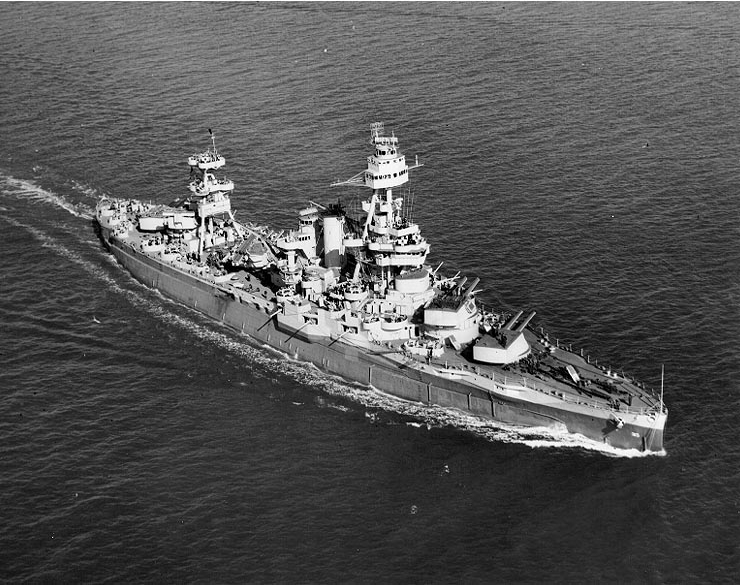
When WWII began, the USS Texas operated as part of the Neutrality Patrol, before spending six months patrolling near Iceland and conducting convoy-escort missions. This was followed by Operation Torch, the Allied invasion of North Africa, during which she became one of only three US battleships to take part. The other two were the USS New York and Massachusetts (BB-59).
As part of Task Force 34.8 (TG 34.8), Texas transmitted Gen. Dwight D. Eisenhower‘s “Voice of Freedom” radio broadcast, which urged France to not oppose the Allied landings. While she wasn’t immediately involved in action against the Germans, Texas was tasked with firing upon a Vichy France ammunition dump near Port Lyautey.
After her brief stint overseas, Texas returned to the US. In April 1944, she began training for her greatest operation yet: D-Day.
USS Texas (BB-35) makes a risky decision on D-Day
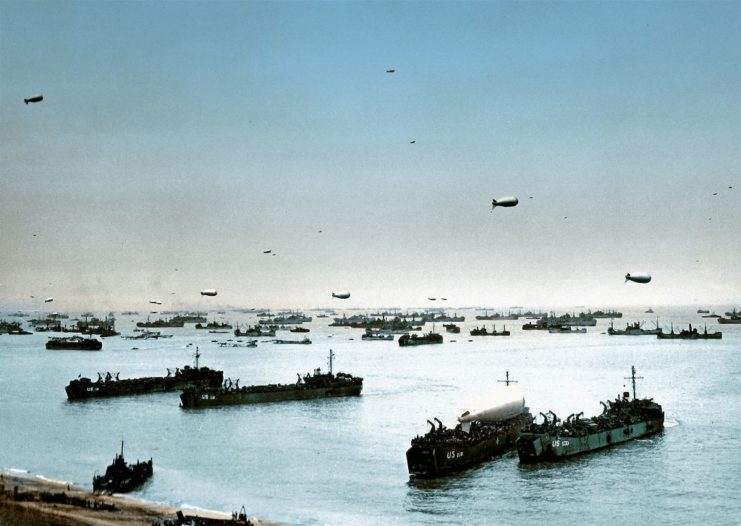
After arriving in Normandy in early June 1944, the USS Texas and the British cruiser HMS Glasgow (C21) entered the Omaha Beach western fire support lane, near Pointe du Hoc. She was one of 702 ships in the US-British flotilla, and one of just seven battleships.
Texas began firing 14-inch shells in support of the 29th Infantry Division and the 2nd and 5th Ranger Battalions. Within a span of just 34 minutes, she’d fired 255 shells – a shocking comparison to the 300 the vessel had fired during the entirety of Operation Torch. Texas then shifted her focus to more inland targets as the Allies moved from the landing beaches. Just 2,700 meters from shore, the battleship continued to bombard German positions throughout June 7-8.
What happened to the USS Texas (BB-35)?
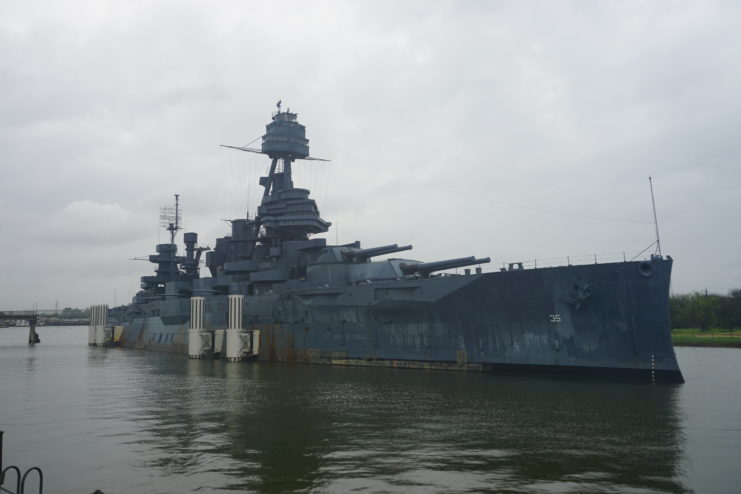
Following the Normandy invasion, the USS Texas assisted in the Battle of Cherbourg and Operation Dragoon. The vessel was then transferred to the Pacific Theater, where she provided naval gun support during the battles of Iwo Jima and Okinawa. Earning a total of five battle stars during WWII, she was decommissioned in 1948.
Texas was the first ever US battleship to become a permanent museum ship and the first to be declared a National Historic Landmark. She is also the only remaining WWI-era dreadnought and the last capital ship to have served in both world wars.
